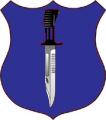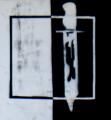Wilf is actually always pretty happy to use other people's useful insight and be freed from the effort of creating his own!! Worked for Vauban!
...but joking aside. I was amazed that this level of data had been captured. Point being, it seems not to have informed UK thinking in any significant way. As of 1980, I was still being subjected to the then new fangled "Training the battle shot," that seemed not to work well even on the range!!
Fast forward 8 years later when I was running the CQB range on Cyprus, found that my platoon's 3F system "Fire till the F**ker Falls" worked pretty dam well!



 Metrics such as those lend weight to weapons. Not a good plan.
Metrics such as those lend weight to weapons. Not a good plan.








 .
.  …).
…).





Bookmarks